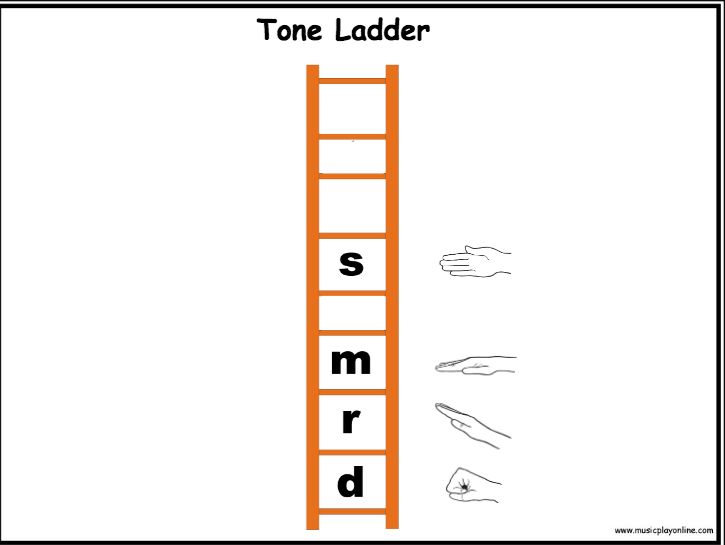Grade 3 Lesson 28
StartBeat, Form, Melodic Direction (high-middle-low), Theme and VariationsThemes(s):
Animal Songs, Environment, Bunnies
Extra Details:
Rhythm
Tone Set
Grades
Learning Module Category
Introduction
In this lesson, you will:
- Play Poison Rhythm
- Play the animated rhythm play along
- Practice do re mi so patterns
- Review “Rabbits”
- Create new patterns using do-re-mi-so
- Optional: Play “Rabbits” on Boomwhackers
- Read the lyrics for “I Love the Mountains”
- Teach “I Love the Mountains”
- Introduction to Theme and Variations Form
- Review “Twinkle Twinkle”
- Sing “Twinkle Twinkle” with Extra Words
- Sing “Twinkle Twinkle” in 3/4 Meter
- Sing “Twinkle Twinkle” in a Minor Key
- Complete a worksheet: How Does Mozart Change “Twinkle Twinkle?”
- Compare 1: Watch a Piano Performance of the Mozart Twinkle Twinkle Variations
- Compare 2: Twinkle Star Variations with light show by Traum Piano
- Compare 3: New Variations on Twinkle Star by Cateen
Extensions
Musicplay is a menu. The teacher is not expected to teach every song or activity. Choose the songs and activities from the list that will best fit your schedule and the needs of your students.
Objectives
- I can sing and move to music.
- I can sing a round.
- I can listen and respond to the music of Mozart.
Teaching Procedures
Play Poison Rhythm
Copy LinkPlay the animated rhythm play along
Copy LinkChoose body percussion or instruments to play the rhythms.
For example:
top row - clap
bottom row - pat
or
top row - sticks
bottom row - tambourine
Do you like how you played it? What other ways can you think of to play the rhythms?
Practice do re mi so patterns
Copy LinkReview “Rabbits”
Copy LinkThis is a fun song for students to learn as part of a spring or Easter theme. Students may be able to read the rhythm and melody of the song. Since students will be familiar with the melody they may be able to create new words.
Read the rhythms for “Rabbits.” The melody will probably be familiar to the students, and you can have students read the melody from the concept slides.
Create new patterns using do re mi so
Copy LinkCan you make up your own patterns using do-re-mi and so?
Try making up a pattern. The class can echo!
Optional: Play “Rabbits” on Boomwhackers
Copy LinkRead the lyrics for “I Love the Mountains”
Copy LinkRead the lyrics.
Think about what the song means.
What is the song about?
Is it a funny song or a serious song?
How do the words make you feel?
Did you learn a new word in this song?
What is your favourite part of the lyrics?
Teach “I Love the Mountains”
Copy LinkThis song is in 2 parts.
Listen to the song, and follow part 1.
Play the song again and try to sing along with part 1.
Listen to the song again and this time follow part 2.
Introduction to Theme and Variations Form
Copy LinkRead the slide.
In the next activity you'll sing "Twinkle Twinkle."
This will be our theme, and then we'll try some variations.
Review “Twinkle Twinkle”
Copy LinkHave you sung the song "Twinkle Twinkle" when you were younger?
In this part of the lesson, we're going to learn how a composer can take a simple melody like this, and create variations on it.
Just for fun, sing the song.
Sing “Twinkle Twinkle” with Extra Words
Copy LinkSing "Twinkle Twinkle" in 3/4 Meter
Copy LinkSing "Twinkle Twinkle" in a Minor Key
Copy LinkComplete a worksheet: How Does Mozart Change “Twinkle Twinkle?”
Copy LinkHow does Mozart change "Twinkle Twinkle?"
Listen to the performance and write a word of two about each variation.
The first section is the theme. There are 12 variations that follow.
The times that each variation starts are given below.
Theme Track List:
0:06 Theme
0:31 Variation 1
:54 Variation 2
1:17 Variation 3
1:41 Variation 4
2:04 Variation 5
2:29 Variation 6
2:51 Variation 7
3:12 Variation 8
3:44 Variation 9
4:05 Variation 10
4:29 Variation 11
5:44 Variation 12
Compare 1: Watch a Piano Performance of the Mozart Twinkle Twinkle Variations
Copy LinkThis is a SafeShare link to a piano performance of Mozart's "Ah! vous dirai je maman" (Twinkle Twinkle, Little Star) KV 265 by Richard Gao (age 6). If the link doesn't work, google piano performance of Mozart Twinkle Star Variations to find one.
Track List:
0:06 Theme
0:31 Variation 1
:54 Variation 2
1:17 Variation 3
1:41 Variation 4
2:04 Variation 5
2:29 Variation 6
2:51 Variation 7
3:12 Variation 8
3:44 Variation 9
4:05 Variation 10
4:29 Variation 11
5:44 Variation 12
Compare 2: Twinkle Star Variations with light show by Traum Piano
Copy LinkCompare 3: New Variations on Twinkle Star by Cateen
Copy LinkThis set of variations on Twinkle starts with the Mozart theme, then goes on to Seven Levels that are 21st C in feel. This is a beautifully played and interesting composition. It would be a great comparison for your students to the Mozart composition.
This video is on YouTube - search "Cateen Twinkle Variations" if the link doesn't work for you.

